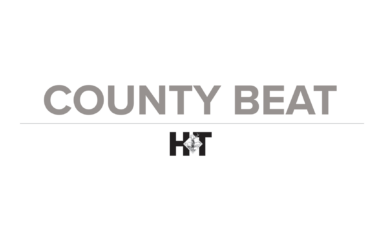RBC I Broadband is a buzz word meaning “broad bandwidth” used to describe the next generation of telecommunications wired and wireless network or “backbone” technologies. Broadband is considered the fourth echelon of major essential services (such as water, sewer, electrical, telephone). Broadband as a unified “one service meets all telecommunications needs provider” consolidates, supports and links to Internet providers, as well as television, wireless telephone and wired coaxial cable service providers and consumers through the Internet “cloud.” Broadband could be compared to a vast network of conduits or pipelines that carry a variety of digital data services, but are exponentially more extensive and complicated, linking continents, countries and individuals.
There are two elements of broadband that are essential for digital data: high capacity and high speed. The FCC considers a minimum threshold of approximately four megabits per second for download speed and one megabit per second for upload speed. Most existing local Internet service providers such as telephone wireline DSL and satellite Internet data networks can meet that threshold, but current and future needs will require larger capacities and higher speeds (for example, downloading a high definition movie at those rates can take a large amount of time when compared to using fiber optic cable service which has much faster and larger capacity, and can deliver the same movie in mere seconds).
A community-based broadband coalition
The development of broadband in a given county or region should never be controlled exclusively by commercial vendors, but rather through a coordinated effort or community-based coalition steered by local (county and municipal) governments, special districts, technical advisory consortiums, businesses, commercial service providers and especially consumers, in order to achieve the optimal and desired coverage and quality of service for all consumers.
Broadband technology and infrastructure have the greatest potential to positively affect economic development and thus the growth and well-being of a given geographic and demographic region. Progress will be directly tied to the efficacy of broadband service throughout the region.
Broadband in rural areas
While broadband is much more extensively developed in urban areas, it is considerably less well developed in rural areas and particularly in mountainous terrain with sparse populations. This is partly due to economics as commercial or even nonprofit providers must realize a return on investment to install sufficient technology to support consumers in a given area. The infrastructure cost for installation and maintenance of such technology is very high, consequently commercial broadband and other providers may be slow to install adequate comprehensive networks that reach all potential consumers in sparsely populated areas.
Funding of broadband
Federal grants and subsidies have been created to expedite the process of installing such technology, especially in rural areas, as an incentive to provide comprehensive broadband coverage. The cost of installing fiber optic cabling has dropped over the years and local community individual subscriber installations are thought to average about $800 per subscriber initially, with modest monthly charges thereafter.
What is fiber optic cable?
Fiber optic cable will eventually replace all current copper wire cabling now used for wired telephone service and coaxial cable used for cable television and other “bundled services” such as Internet.
Fiber optic cable has the largest and fastest capacity for digital data of any technology presently known or in use, and thus will be the ultimate “backbone” for broadband. Rio Blanco County is already linked in some areas by buried fiber optic trunk cables between some adjacent communities, but distribution of fiber optic cable throughout communities is not yet available for individual subscribers, although some of the schools, other service organizations and local governments have fiber access on a limited basis. Fiber optic broadband service may be provided by private vendors, or by a community-owned network as is done in some communities in Colorado.
How does fiber optic cable work?
Fiber optic cable technology uses Light Emitting Diode (LED) lasers to create light which is then modulated with digital signals from computers, streaming video, and many other sources, and then is focused through very small strands of glass or plastic optical cable conduits that can travel over many miles without amplification. For example a single strand of fiber optic cable can carry 4,000 simultaneous (multiplexed) digital telephone voice conversations which otherwise would take thousands of pairs of copper cable to support the same volume of communications in an analog format.
4G and 3G wireless digital radio technologies support cellular smart phones
To support mobile cell phones and the new smart phones it is necessary to carry data via radio or “wireless” cellular phone networks that transmit signals via super high frequency (SHF) radio channels from cellular network transmitter sites to the portable devices.
3G and 4G (i.e., third generation and fourth generation data service formats) are terms used to describe the speed and capacity of the wireless network support technology. Most areas are served by 3G, but 4G is being rapidly expanded to replace 3G to serve smart phones at much faster/larger data rates and efficiencies. 4G-capable smart phones will generally operate on 3G networks but will be slower.
“Wireless speeds: Approximately 36 percent of Americans have access to wireless (fixed, mobile, licensed and unlicensed) Internet service at maximum advertised download speeds of 6 Mbps or greater, which some consider the minimum speed associated with 4G wireless broadband service. Ninety-five percent of Americans have access to wireless Internet service speeds of at least 768 kbps, which corresponds roughly to 3G wireless service.” (from NTIA website)
Fiber optic cable or microwave radio then links the radio cellular tower to the switching system and ultimately to the Internet.
In areas where cellular transmitter sites are sparse, widely separated, and where mountainous terrain creates obstacles to block radio signals, wireless cell or smart phones may experience signal drop-outs or no service at all. SHF radio signals are much like beams of visible light, so any obstruction (or great distance) may limit or completely block the signal and thus diminishes uniform coverage and service.
Emergency Public Safety Access via 9-1-1 from Wireless Phones
Motorists traveling on Highway 13 between Meeker and Rifle and between Meeker and Craig have little or no coverage over the 40 to 50 mile corridors respectively. There is limited coverage on the north end of County Road 5 (Piceance Creek) and Highway 13, but much of County Road 5 has no coverage for an area that has extensive energy production facilities and a high volume of vehicle traffic. These conditions present a public safety hazard particularly in adverse weather where a consumer frequently cannot call 911 for emergency assistance in case of motor vehicle accidents or medical emergencies, reckless driving and other hazards. Only consumers with expensive satellite phones can realize full coverage virtually anywhere in the region.
Hunters and other visitors often experience a similar lack of coverage in many recreational areas popular for outdoor activities and common places for visitors to be lost, injured or fall ill due to high altitude or high risk activities throughout the year. Tourism is a major economic component of the economy of Rio Blanco County and visitors should have a right to expect comprehensive and reliable wireless coverage throughout their recreational area of choice. Good coverage translates into more popularity and thus more visitations with economic benefits to the community.
Polygon adjoining cell sites offer superior coverage and low profile impact on environment
In order to provide uniform reliable signal coverage, a network of cellular site polygons (i.e., a 7-sided transmitter/receiver site with a distribution or propagation pattern that adjoins other polygons equally) with adjacent cellular transmitter sites, are designed to hand off service transparently as a subscriber passes through the coverage area from one site to the next site. This occurs seamlessly without interruption of the transmission. It is for this reason that lone cell transmitter sites using extremely tall towers may not be nearly as effective in providing uniform coverage to the service area when compared to a network of adjoining polygon sites.
In urban areas, miniature polygon adjoining sites are the most current design technology rather than lone and widely separated tower sites. Small low power sites can be mounted on existing telephone and power line utility poles, or buildings, and are very environmentally friendly as they are quite small and hardly noticeable. Moreover, multiple miniature sites permit reusing scarce cell phone frequencies that large and tall towers cannot accommodate as interference will result due to the higher power and longer distance of signal propagation.
To imagine what a polygon site might include, one polygon transmitter site mounted on a building or utility pole in Meeker might serve a 16-block area. The borders might be located between Fourth Street and Eighth Street from east to west, and between Park Street and Water Street from north to south. The next polygons would border those zones until the entire area is covered uniformly. If there was a spot in the zone that didn’t have coverage, the next zone adjacent to those sites might be able to receive the signal from that spot. Service inside buildings is always the most challenging due to blockage of signals by the building walls, so having multiple transmitter and receiver sites nearby often guarantees nearly full coverage in the zones.
Learn more about broadband at these websites:
http://www.colorado.gov/cs/Satellite/OIT-StateInitiatives/CBON/1251575390656
http://www.colorado.gov/cs/Satellite?c=Document_C&childpagename=OIT-StateInitiatives%2FDocument_C%2FCBONAddLinkView&cid=1251610054179&pagename=CBONWrapper
http://www.ntia.doc.gov/press-releases/2011/commerce%C3%A2%E2%82%AC%E2%84%A2s-ntia-unveils-national-broadband-map-and-new-broadband-adoption-survey
http://www.fcc.gov/maps/connect-compete-home-broadband-coverage-map
http://www.att.com/network/?WT.srch=1&wtPaidSearchTerm=4+g+wireless
—
Editor’s note: This article will be the first in a series to be published in ensuing weeks on the topic of broadband telecommunications. The objective of this series is to provide a user-friendly understanding of this evolving telecommunications technology that will directly affect the lives, environment, careers, avocations, and economic development in the White River valley, the state of Colorado, the nation and ultimately the world.





















